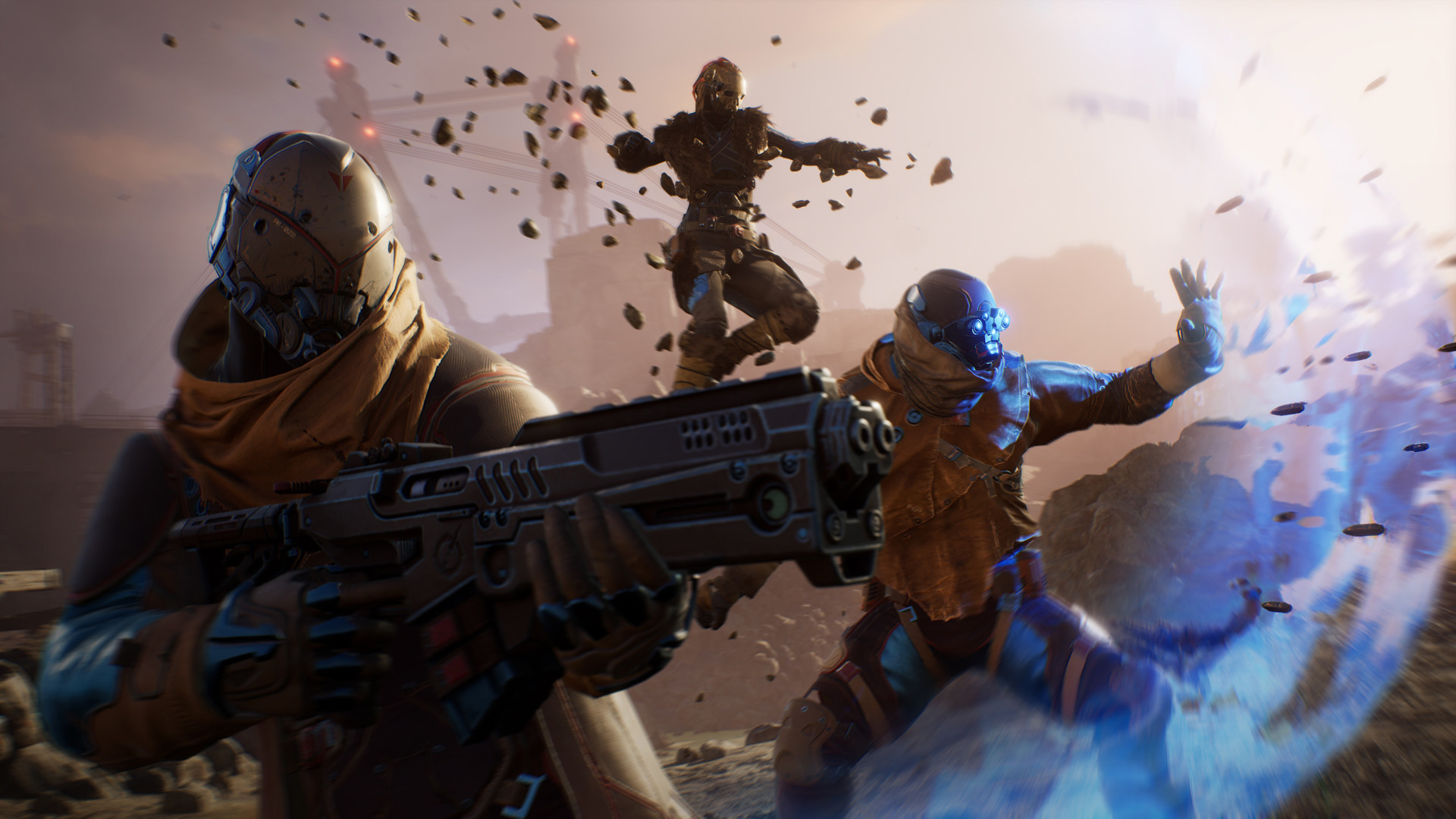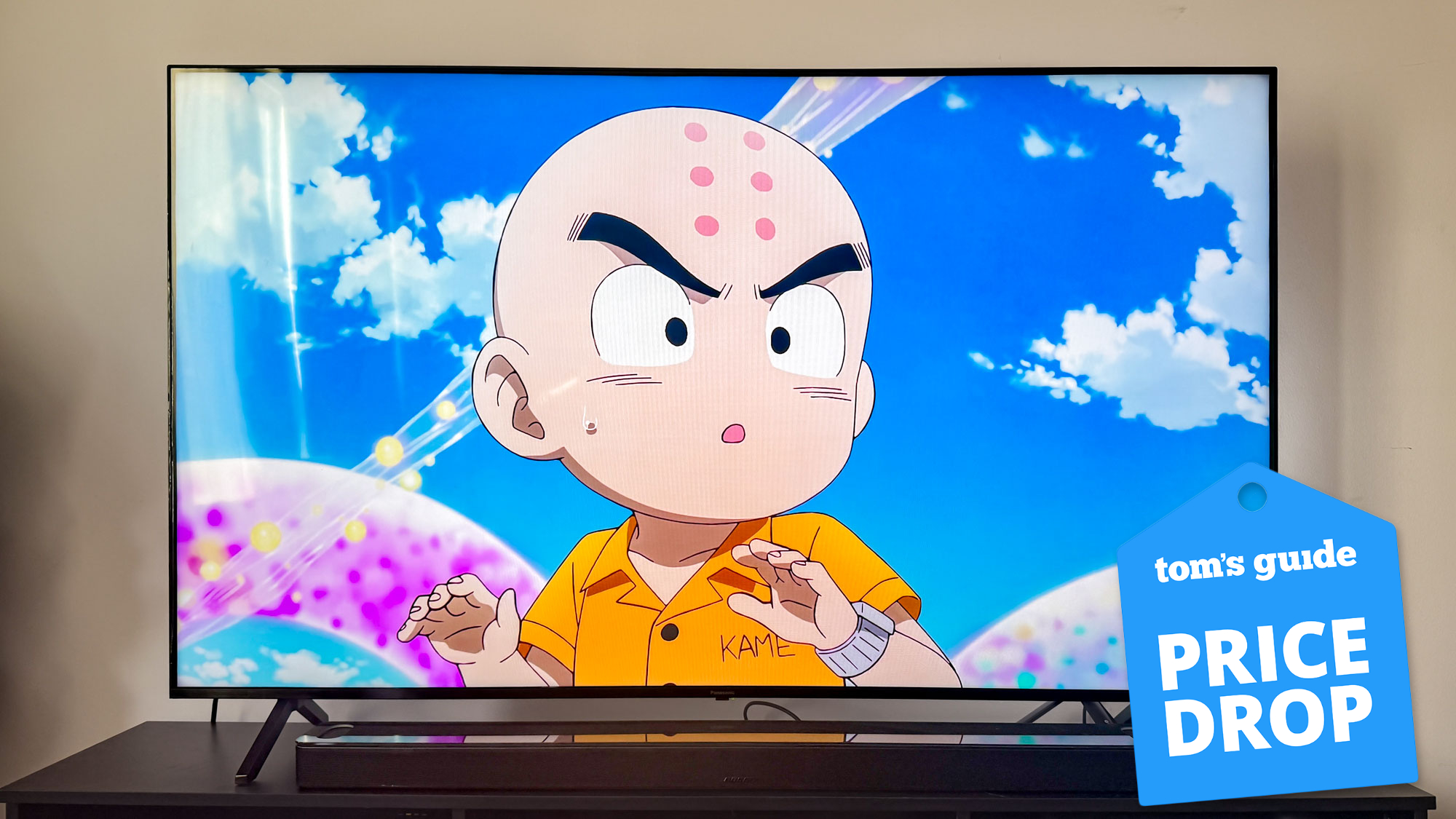Play Outriders — but don’t bother playing alone

Outriders is finally here, and you can play the game just about anywhere. This highly anticipated multiplayer shooter/RPG is available on PC, PS4, PS5, Xbox One, Xbox Series X/S — and even Xbox Game Pass, if you’re not married to owning your copy forever. Since Outriders supports cross-play multiplayer, you can play with any of your friends, regardless of which system they play on. And, frankly, you should — the game is not nearly as much fun by yourself.
Square Enix provided Tom’s Guide with a review copy of Outriders, and I’ve been slowly but surely working my way through the story campaign for the last two days. I’ve played Outriders before, both at conventions and via online previews. But in those situations, I always had two other players by my side by default. Playing Outriders on my own PS5, multiplayer partners have been a little harder to come by.
- Play the best PS5 games
- Also try the best Xbox Series X games
- Plus: The most awesome Game Boy clone ever just got a big delay
On the one hand, this has helped me see the game’s strengths and weaknesses more clearly, as just about anything is more fun with two friends. On the other hand, it’s highlighted that Outriders really needs a full three-person party to fulfill its potential.

Outriders impressions
For those of you who haven’t followed the Outriders development cycle, it’s a class-based third-person shooter with RPG elements. You play as an Outrider: an advance scout on a promising new planet, where humanity can restart after the death of Old Earth. Some sci-fi nonsense goes awry, your Outrider gets magical powers, the story jumps ahead three decades, and humanity is back to fighting amongst themselves rather than colonizing the now-much-deadlier planet. Your job is to stop a war — or perhaps rise above it, as a rare and powerful Altered human.
The story is actually pretty good, and we’ll cover it more thoroughly in our full review. But it’s fair to say that gameplay is the big draw in a multiplayer shooter, and Outriders definitely delivers on that front. After a brief prologue, you choose to play as one of four classes. Devastators get up close and personal with enemies; Pryomancers can light things on fire; Technomancers can heal and use gadgetry; Tricksters can play with spacetime anomalies.
The classes all feel pretty different to play, and since each class also offers three different specialization classes, everyone should find something to suit their tastes. (I’ve been building up a Devastator with a lot of health, partially because I like close-range combat, but mostly because you can die quite quickly in a lot of firefights otherwise.)
I played through the first major arc of Outriders, which takes you from first landing on the planet Enoch, to a climactic boss fight with a fellow Altered called Gauss. (No points for guessing that Gauss has electricity powers.) Along the way, I fought off a lot of enemy soldiers, learned my basic class abilities and started to upgrade my skills.
Get instant access to breaking news, the hottest reviews, great deals and helpful tips.
The first thing I can say is that Outriders has unusually good moment-to-moment shooting. Many games in the looter-shooter genre fall back on character optimization as the core gameplay loop, whether through leveling up or finding gear. But it’s clear that Polish developer People Can Fly spent a lot of time making sure that every assault rifle, submachine gun, shotgun, sniper rifle and pistol in this game simply feels excellent to fire. Every shot has weight and impact; every hit or miss feels fair. Even the reload times toe the difficult line between “short enough to stay engaged” and “long enough to feel threatening.”
The skills and equipment systems are also satisfying. As you fight enemies and complete quests, you’ll earn experience, which lets you level up. Leveling up lets you learn new class skills, as well as improve existing abilities. For example: as a Devastator, my first three skills let me ground-pound nearby enemies, encase myself in bullet-deflecting armor and blast across the battlefield to interrupt enemy attacks. The skills recharge at a steady clip, so you can use them often to gain an edge. As you level up, you can choose whether to improve these skills, or gain more passive benefits to health and attack damage.
Equipment is also pretty intuitive. Each level contains a number of item caches — some out in the open, some hidden behind walls or enemy outposts. Each piece of gear (guns, jackets, boots, etc.) has an item level, as well as a color to indicate rarity. The game makes it very clear which items you should equip based on their power levels, although I wish there were an “optimize” button that would simply outfit a character with the best weapons and armor available in your inventory.

Outriders multiplayer
It’s fair to say that I was impressed with the core gameplay in Outriders, and I was eager to advance the story. The only trouble is that finding a multiplayer group isn’t all that easy at the moment. Before setting out on a mission, you can consult a computer terminal at your home base and either construct a party from your friends, or look for random partners online.
Outriders implements a smart system, where it will search for other players at the same point in the story. That way, you can advance together rather than having to replay old sections. (Although you can do that, too, if you’re trying to help friends catch up.)
Before the game went live, the servers were pretty empty — which makes sense, as Outriders wasn’t widely available yet. However, even on launch night, I tried to find a random group three separate times. On each occasion, I wound up staring at the matchmaking screen until I got bored and decided to just tackle the next story mission myself.
I wasn’t the only one with connection problems, apparently. Lots of people couldn’t find matches — or couldn’t play the game at all. Cross-play is not working seamlessly yet, either, meaning it could be tough to team up with your Xbox friends if you’re on PlayStation, and vice versa.
These issues will get ironed out over time, and the player base should naturally be bigger this coming weekend than on a weeknight. But still, it drove home that while you can play solo, Outriders is very much a multiplayer-first experience. The game gives you the option to increase the “World Level,” which makes enemies tougher in exchange for better loot.
Better loot is pretty much a necessity in a looter shooter, but upping the difficulty without any backup is a very tough proposition. I lost count of how many times I had to retry the Gauss boss battle, since he can (and will) deplete your health bar in only a few hits. As a Devastator, I had few healing options at my disposal, and close-range combat was essentially suicide. In cases like this, all a solo player can do is grin and bear it.
But having to play Outriders perfectly is a much less fun experience than the chaotic, freeform experimentation that comes with multiplayer groups. Even having one other player on your team gives you some leeway for failure; going solo does not. There’s essentially no penalty for dying, other than having to restart your most recent firefight, but success feels a little shallower without the threat of lost progress.
Tom’s Guide is still in the early stages of Outriders, and we’ll have a more thorough review next week. In the meantime, it’s a good weekend project, provided you can take a few friends along for the ride.

Marshall Honorof was a senior editor for Tom's Guide, overseeing the site's coverage of gaming hardware and software. He comes from a science writing background, having studied paleomammalogy, biological anthropology, and the history of science and technology. After hours, you can find him practicing taekwondo or doing deep dives on classic sci-fi.
